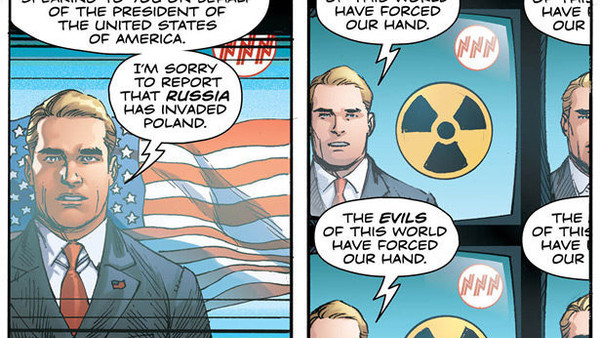8 Biggest Things To Come Out Of Doomsday Clock #1
8. The World Is Ending (Surprise!)

Although Doomsday Clock's title would've probably implied as much already, the world isn't exactly in the best of states when we find it in issue one. The peace Ozymandias masterminded at the end of Moore's novel has collapsed; the USSR and the United States are on the brink of nuclear catastrophe, the President is off messing around on a golf course (what an absurd concept, right?), and riots are kicking off all over the place.
It's not a fun place to be, clearly (especially not with William F. Buckley still on the airwaves), but it's part and parcel of the world Johns has conceptualised. It's 1992, a year that, in our time at least, was heralded as the beginning of a New World Order - one that had absented the Cold War dynamic and was on the cusp of embracing liberal democracy (as Francis Fukuyama would attest).
In Watchmen's 1992, Russia - taking on an ultranationalist persuasion - has invaded Eastern Europe, triggering an impending conflict between NATO and the Warsaw Pact nations. It's a world ending scenario by any other name, except this time there's no chance of it bringing the world together. The reveal of Ozymandias' deception has only made peace less of a possibility, and Johns is keen to remind us of that fact, perforating the background with literature heralding the now tarnished peace brought about by the squid's arrival six years earlier.
Where's Manhattan when you need him?